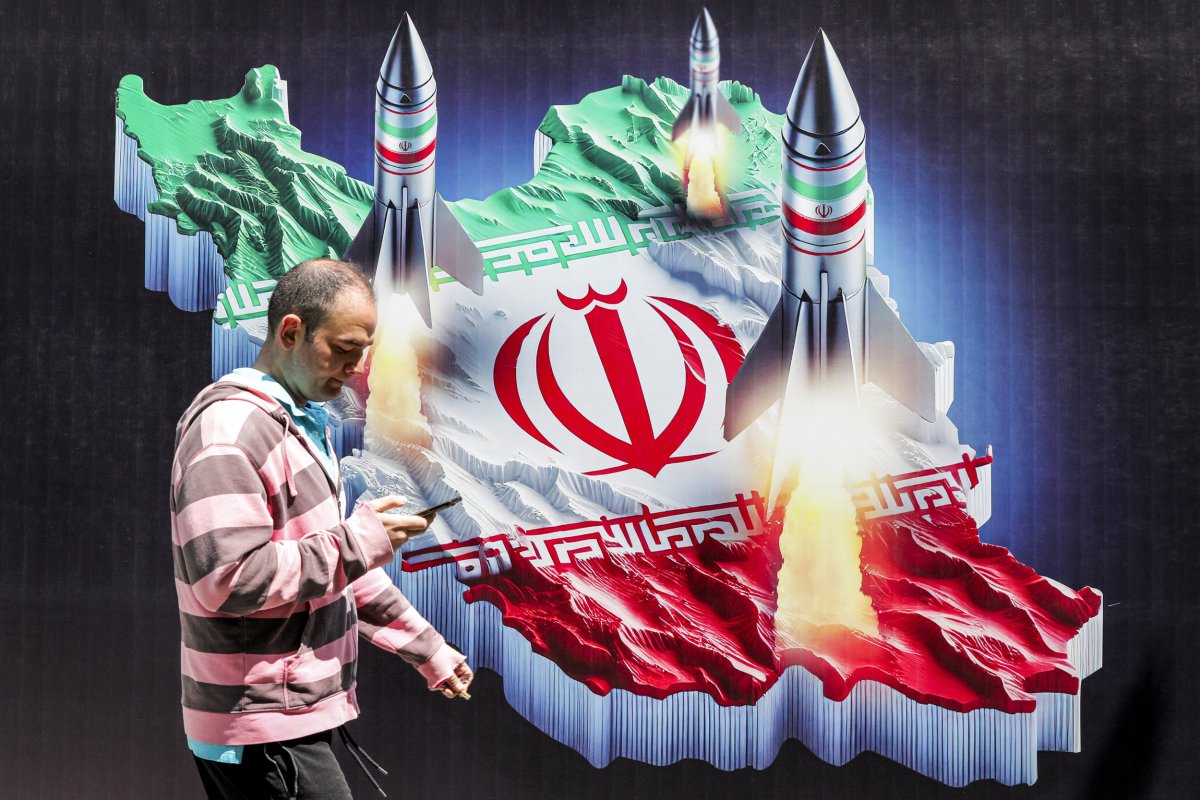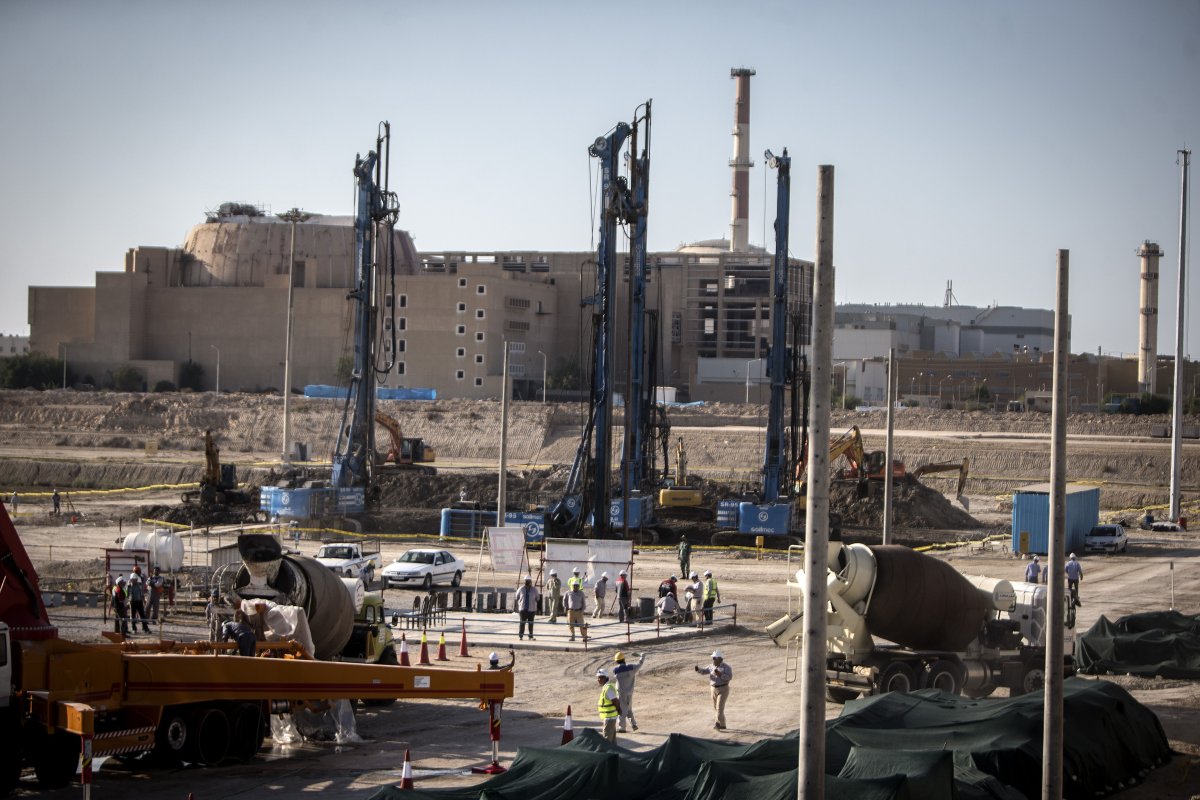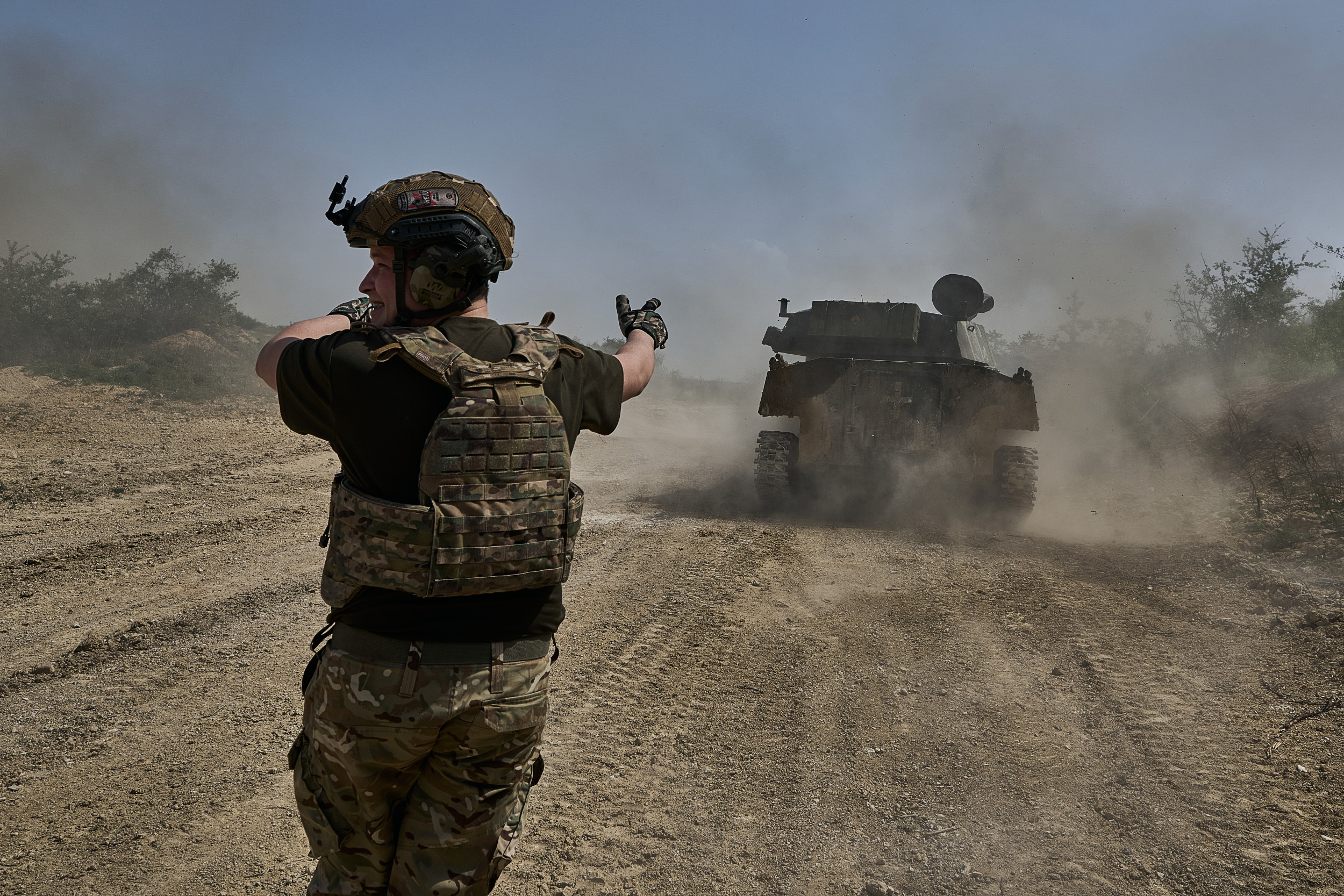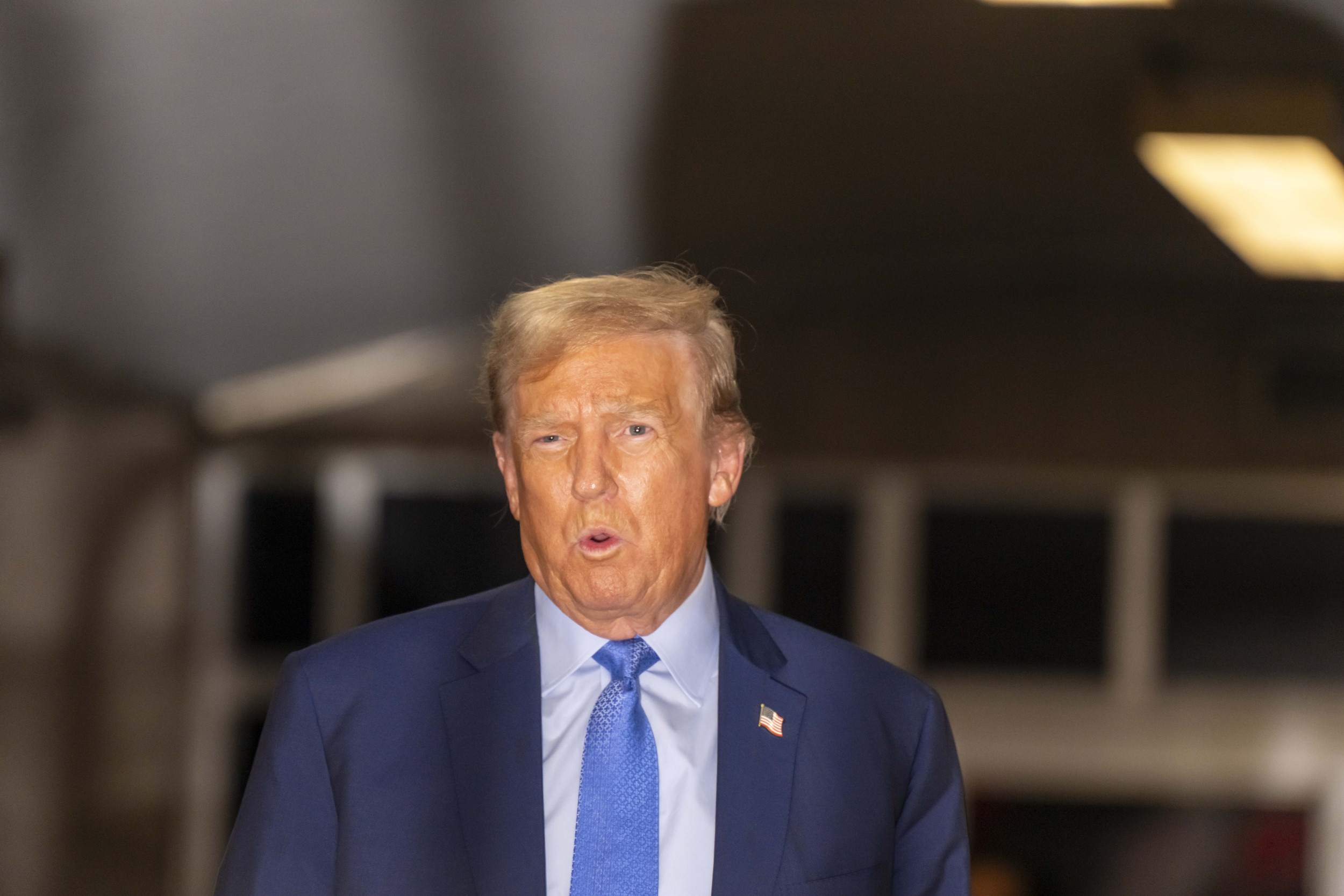The decades-long Israel-Iran "shadow war" went hot this weekend with Tehran's unprecedented missile and drone attack, which though largely defeated by Israeli and allied defenses represents a major escalation between the two geopolitical foes.
The nuclear question has hung heavy over the undeclared war. Israel is one of the world's nine nuclear nations, while Iran is striving to become the 10th despite Israeli, U.S. and collective Western opposition.
Tehran's telegraphed attack at the weekend caused one civilian casualty and limited damage at one Israeli air base, though is thought to have cost more than $550 million in defensive munitions. The strike, though massive in scale, appears designed to avoid further escalation while sating Iranian desire for a retaliation to Israel's killing of a senior Islamic Revolutionary Guards Corps commander earlier this month.

Israel is now mulling a possible response, as President Joe Biden reportedly urges Prime Minister Benjamin Netanyahu to forgo further escalation. Wartime Cabinet minister and long-time Israeli opposition leader Benny Gantz said on Sunday that the country would "build a regional coalition and exact a price from Iran, in a way and at a time that suits us."
Iran's nuclear program and facilities have been key targets for Israeli and American special operations in recent decades, and the devolving security environment may again put Tehran's nuclear capabilities in the crosshairs.
Israel's Nuclear 'Secret'
Israel has always refused to confirm its possession of a nuclear arsenal and sought to silence those who might, per its broad policy of strategic ambiguity.
The 1978 Vela incident is thought to mark the dawn of Israel's nuclear era, a so-called "double flash" detected by an American satellite in September 1979 near the isolated South African territory of the Prince Edward Islands in the Indian Ocean. The flashes are widely believed to have been detonations from an undeclared joint-nuclear test conducted by South Africa and Israel.
South Africa—then under the control an all-white apartheid government—dismantled its nuclear program in the late 1980s and joined the 1991 Treaty on the Non-Proliferation of Nuclear Weapons.
Israel is not a party to the landmark treaty and is now estimated to have between 90 and 400 nuclear warheads.
Israeli leaders have generally kept silent on atomic capabilities, though far-right Cabinet minister Amichai Eliyahu tacitly admitted them in November when saying it was "an option" to launch a nuclear strike on the Gaza Strip.
Leaked allied assessments also offer some hints at Israel's nuclear capabilities. A cache of emails from former Secretary of State Colin Powell released in 2016 included one that read: "The boys in Tehran know Israel has 200 [nuclear weapons], all targeted on Tehran, and we have thousands."
Iranian leaders, Powell also wrote, knew then that they "can't use one if they finally make one."

Nuclear No Deal
Tehran's nuclear program was put on ice by the 2016 Joint Comprehensive Plan of Action—the JCPOA, widely known as the Iran nuclear deal—which lifted punishing sanctions and released around $100 billion in frozen funds in exchange for an end to Iranian atomic weapon research.
The deal was negotiated under President Barack Obama and stood as one of the key foreign policy achievements of his two terms in office. His successor, President Donald Trump, withdrew the U.S. from the accord in 2018, amid broad Republican and Israeli frustration at Iran's continued ballistic missile development and use of regional proxy forces.
This subjected Iran to renewed sanctions—known as the "maximum pressure" approach—but also effectively removed the nuclear restrictions put on Tehran by the JCPOA, leaving the road open for Iranian leaders to again push towards atomic weapon development.
Uranium enriched to between 3 and 5 percent is suitable for use in civilian energy facilities. For use in nuclear weapons it must be enriched to 90 percent.
Raising the enrichment level to 60 percent puts uranium within a short technical leap of the 90 percent weapons-grade threshold. This gap is relatively easy and fast to cross and Tehran is believed to have already reached estimated enrichment levels as high as 84 percent.
The International Atomic Energy Agency's most recent quarterly report puts Iran's total enriched uranium stockpile at 5,525.5 kilograms (around 12,182 pounds), representing an increase of 1,038.7 kilograms (2,289 pounds) since the previous report.
Of this, an estimated 121.5 kilograms (267.8 pounds) of uranium has been enriched up to 60 percent, a decrease of 6.8 kilograms (14.9 pounds) since the previous estimate. The IAEA estimates that 42 kilograms (92.5 pounds) of uranium enriched to 60 percent is theoretically sufficient to produce one nuclear warhead.
It is not entirely clear how quickly Iran can accomplish the final steps needed to transition from an enriched uranium stockpile to possessing a nuclear weapon. This is known as a state's "breakout time." Last year, former Under Secretary of Defense for Policy Colin Kahl told Congress that Iran's breakout time could be as little as 12 days.
Eric Brewer, the deputy vice president of the Washington-based Nuclear Threat Initiative, told The Associated Press in February: "Iran has enough 60 percent material for roughly three nuclear weapons, if further enriched to 90 percent."
"When you include Iran's stockpile of 20 percent enriched uranium and 5 percent, it has enough material for several additional bombs," Brewer added. "Iran would only need a couple of weeks to produce that weapons-grade material, but probably much longer—a year or more—to build an actual bomb it could deliver."

Uncommon Knowledge
Newsweek is committed to challenging conventional wisdom and finding connections in the search for common ground.
Newsweek is committed to challenging conventional wisdom and finding connections in the search for common ground.
About the writer
David Brennan is Newsweek's Diplomatic Correspondent covering world politics and conflicts from London with a focus on NATO, the European ... Read more
To read how Newsweek uses AI as a newsroom tool, Click here.








